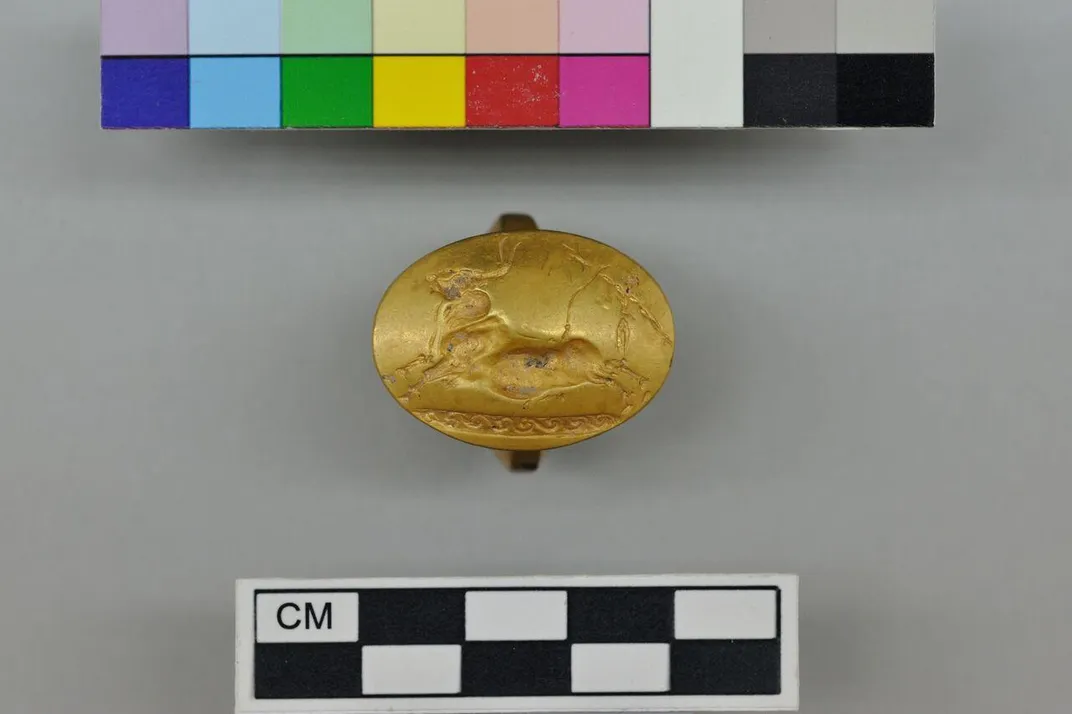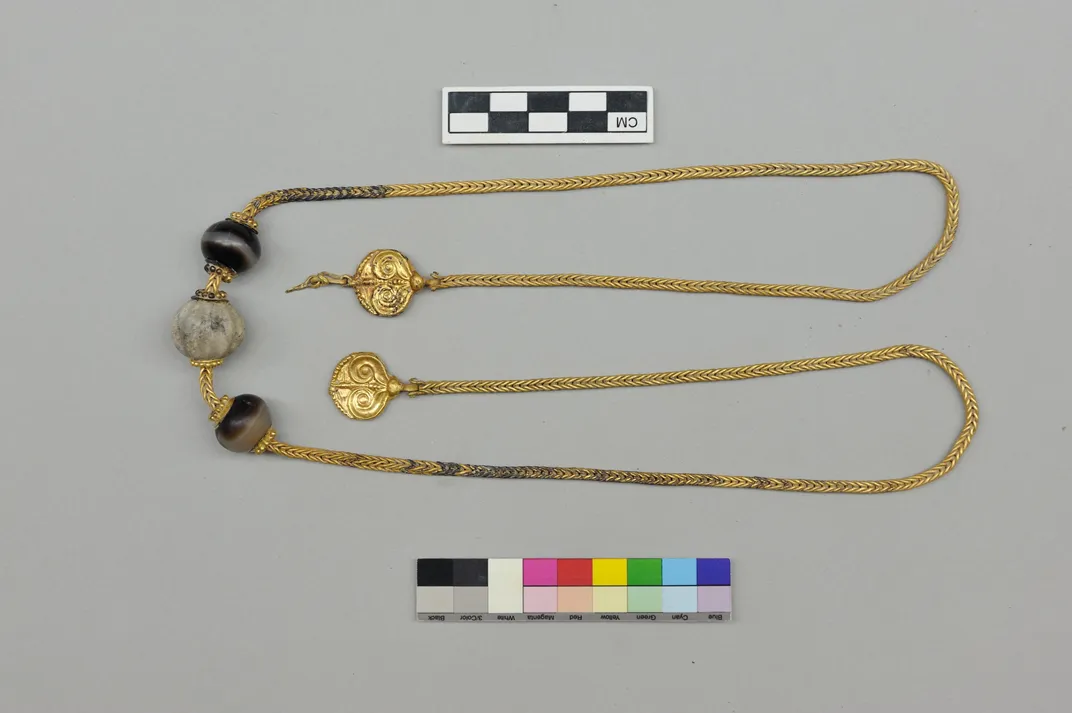The Incredible Treasures Found Inside the ‘Griffin Warrior’ Tomb
Why was a Mycenaean soldier buried with so many riches?
Every archaeologist dreams of uncovering a trove of historically significant objects. Last spring, that dream became a reality for a team led by two University of Cincinnati scholars, who discovered the grave of a Bronze Age warrior in southwestern Greece. Now, as Nicholas Wade writes for the New York Times, the find has yielded intriguing treasures—and plenty of excitement from archaeologists.
The gravesite was found within the ancient city of Pylos. It's being called the richest tomb found in the region since the 1950s, Wade reports, for "the richness of its find and its potential for shedding light on the emergence of the Mycenaean civilization."
In a release, the University of Cincinnati lays out the wealth within the grave: bronze jugs; basins of bronze, silver and gold; four solid-gold rings; a bronze sword with an ivory hilt covered in gold; more than 1,000 beads of different gems; a gold-hilted dagger and much more. The entombed skeleton even has a nickname—the "Griffin Warrior"—in reference to an ivory plaque inscribed with a griffin found nearby.
Though the burial objects suggest the Griffin Warrior was an important person, they also raise intriguing questions. "The discovery of so much jewelry with a male burial challenges the commonly held belief that these apparently 'feminine' adornments and offerings accompanied only wealthy women to the hereafter," the excavation team says in the release.
The find raises questions about the warrior's culture, too. He was buried near a Mycenaean palace, but the artifacts within the grave are primarily Minoan. Mycenaeans lived in the region between the 15th and 13th centuries B.C., dominating the area with military might. Scholars believe the Mycenaeans borrowed greatly from Minoan culture—so much so that some studies of Mycenaean religion even lump the two together.
Does the Griffin Warrior suggest a complex cultural interchange between the two civilizations? Archaeologists and historians will work to find answers, Wade writes, by piecing together evidence collected from the grave. And that's a task researchers will gladly undertake.
/https://tf-cmsv2-smithsonianmag-media.s3.amazonaws.com/accounts/headshot/erin.png)






/https://tf-cmsv2-smithsonianmag-media.s3.amazonaws.com/accounts/headshot/erin.png)